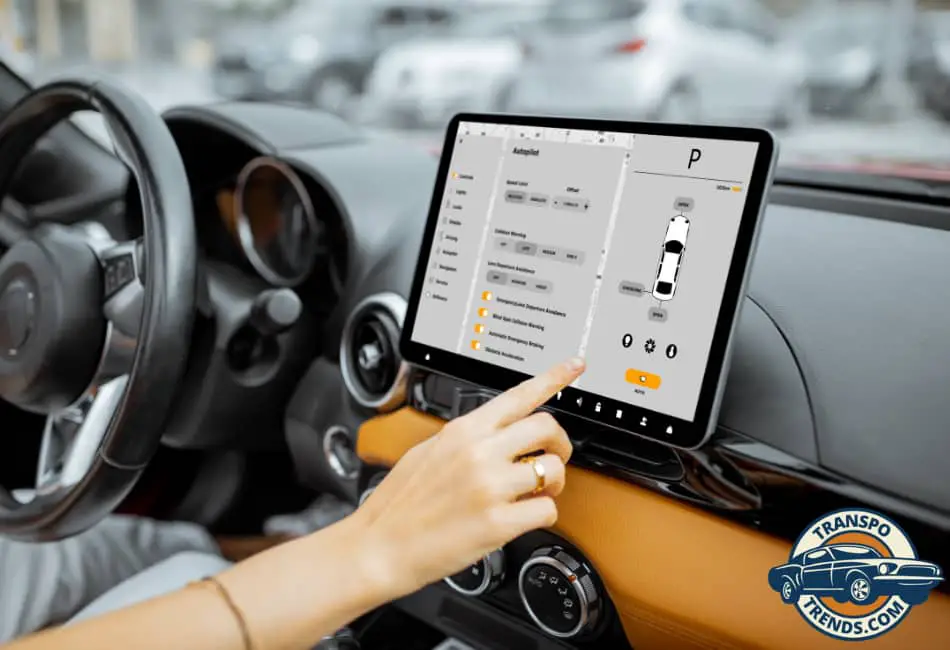Picture this: you have an important presentation scheduled for today, and you’re already running late. As you hurriedly get into your car and turn the key, nothing happens.
Your heart sinks as you realize that your battery is dead. With time running out, jump-starting your car seems like the quickest solution to get back on track.
But modern vehicles are increasingly dependent on sophisticated computer systems, raising concerns about potential damage during the jump-starting process.
In this blog post, we’ll delve into the question: Can jump-starting a car potentially damage your car’s computer?
Understanding Modern Car Computers
Contemporary vehicles come equipped with advanced computer systems responsible for managing various aspects of their functionality.
These systems, commonly referred to as Engine Control Modules (ECMs) or Powertrain Control Modules (PCMs), regulate everything from engine performance and fuel efficiency to safety features and in-car entertainment.
An ECM typically comprises several components, including sensors, actuators, and control modules.
These elements work together to ensure seamless communication between different parts of the vehicle, optimizing performance and maintaining safety standards.
Despite their sophistication, car computers can be susceptible to electrical fluctuations, which may occur during the jump-starting process.
To protect your vehicle’s computer system, it’s essential to understand the risks involved and take appropriate precautions.
The Jump Starting Process: The Right Way
To jump-start a car safely and effectively, it’s crucial to follow these steps:
1. Park the Vehicles
- Park the working vehicle close to the one with the dead battery, ensuring that they don’t touch.
- This will make it easier to connect the jumper cables.
2. Turn off Both Vehicles:
- Switch off the engines and engage their parking brakes to prevent any accidental movement.
3. Inspect the Batteries
- Check both batteries for any visible damage, leaks, or cracks.
- If you find any, do not proceed with jump-starting and consult a professional.
4. Connect the Positive (+) Jumper Cable
- Attach one end of the positive jumper cable to the dead battery’s positive terminal, usually marked with a “+” sign and a red cap.
5. Attach the Other End of the Positive Cable
- Connect the opposite end of the positive cable to the working battery’s positive terminal.
6. Connect the Negative (-) Cable
- Attach one end of the negative jumper cable to the working battery’s negative terminal, typically marked with a “-” sign and a black cap.
7. Attach the other End of the Negative Cable
- Connect the opposite end of the negative cable to an unpainted metal surface on the dead vehicle, away from the battery and any moving parts.
- This serves as a grounding point.
8. Start the Working Vehicle
- Turn on the engine of the working vehicle and let it run for a few minutes.
- This allows the dead battery to charge slightly before attempting to start it.
9. Attempt to Start the Dead Vehicle
- Turn the key in the ignition of the car with the dead battery.
- If the engine starts, let it run for a few more minutes to charge the battery further.
10. Disconnect the Cables:
- Carefully remove the jumper cables in reverse order, starting with the negative cable on the previously dead vehicle.
- Ensure that the cables don’t touch each other or any metal surfaces while disconnecting them.
Following these steps and adhering to safety precautions is essential to minimize potential risks during the jump-starting process.
Potential Risks to Car Computers
During the jump-starting process, car computers can be exposed to several potential risks. Here’s a comprehensive list of the most common hazards that can affect your vehicle’s computer system by being aware of these potential risks and taking appropriate measures to mitigate them.
Voltage Spikes or Surges
The most significant risk to car computers during jump starting is voltage fluctuations. These can occur if the jumper cables are connected incorrectly, if there’s a sudden surge in electrical current, or if the cables are of poor quality or damaged.
Reverse Polarity Connections
Connecting the cables in reverse polarity (positive to negative or vice versa) can cause extensive damage to not only the computer system but also other electronic components within the vehicle.
Incompatible Electrical Systems
Connecting two vehicles with incompatible electrical systems can result in damage to the car’s computer and other sensitive electronics. Always ensure that both vehicles have the same voltage system (12V is the most common) before attempting to jump-start.
Overcharging the Dead Battery
Rapidly charging the dead battery by excessively revving the engine of the working vehicle can lead to an increase in voltage, which may damage the car’s computer system.
Short Circuits
If the jumper cables accidentally touch each other or any metal surfaces while connected to the batteries, it can create a short circuit. This can result in damage to the car’s computer and other electrical components.
Poor Grounding
Failing to connect the negative cable to a proper grounding point on the dead vehicle can lead to electrical issues and potential damage to the car’s computer.
Damaged or Leaking Batteries
Attempting to jump-start a vehicle with a visibly damaged or leaking battery can pose risks to the car’s computer, as well as create safety hazards. Always inspect the batteries before proceeding with jump-starting.
Environmental Factors
Extreme temperatures, particularly cold weather, can affect a car’s battery performance and increase the risk of damage to the computer system during jump starting. It’s essential to take extra precautions in such conditions.
While jump-starting a car carries certain risks to the computer system, it’s important to be aware of the consequences of incorrectly jump-starting a vehicle.
To better understand the critical things that can happen during an improper jump-start, you can refer to the article about the 9 critical consequences of incorrectly jump-starting a car.
Safeguards and Precautions
To protect your car’s computer system during jump starting, it’s essential to take several precautions:
1. Use High-quality Jumper Cables
Invest in a set of heavy-duty, well-insulated jumper cables with sturdy clamps. This will help ensure a secure connection and reduce the likelihood of voltage fluctuations.
2. Follow the proper procedure:
Adhere to the step-by-step guide outlined above, and consult your vehicle’s owner’s manual for any specific guidelines or recommendations.
3. Avoid Rapid Charging
When jump starting, resist the temptation to rev the engine of the working vehicle excessively. Doing so can lead to a rapid increase in voltage, which may damage the car’s computer.
4. Inspect Your Equipment
Before attempting to jump-start a vehicle, check your jumper cables for any signs of wear, fraying, or damage. If you notice any issues, replace the cables before proceeding.
5. Disconnect Electronic Devices
Before jump starting your car, disconnect or turn off all electronic devices in the car, such as smartphones, tablets, or GPS units.
This will prevent any power surges that might harm these devices or the car’s computer system.
6. Park Both Vehicles Properly
To reduce the chance of accidental damage or injury while jump starting, park both vehicles safely and stably in a location that’s not near traffic.
7. Turn off all Electrical Components
To avoid voltage spikes while jump starting, turn off all electrical components in the dead vehicle such as headlights, interior lights, radio, and air conditioning before connecting the jumper cables.
This will also reduce the load on the car’s electrical system.
8. Connect the Cables Correctly
To safely jump-start a dead battery, make sure to connect the jumper cables in the proper order. First, connect the positive (+) terminal of the working battery to the positive terminal of the dead battery.
Then, connect the negative (-) terminal of the working battery to a metal part of the dead vehicle’s engine block. Remember to check the polarity and secure the connections before attempting to start the engine.
9. Maintain a Stable Connection
After connecting the cables, make sure to firmly secure them to either the battery terminals or the designated connection points.
It’s important to keep the cables stable during the jump start to prevent power fluctuations, so avoid moving or jostling them.
10. Monitor the Battery Voltage
To ensure safe jump starting, measure the dead battery’s voltage with a voltmeter or digital battery monitor.
Continuously monitor the voltage during the process to detect any abnormal readings or fluctuations. If so, stop jump starting and seek professional help.
11. Allow the Dead Battery to Charge
After attaching the jumper cables, wait for a few minutes to allow the dead battery to charge while the working vehicle runs. Do not rev the engine too much as it might stress the car’s electrical system.
To prevent sudden voltage surges that could harm the car’s computer or other delicate parts, it is preferable to charge the battery gradually.
If you are unsure about jump starting your automatic car or manual car or have no experience, it is recommended to get help from a professional or ask for roadside assistance to avoid any risks or damage to your car’s computer system.
Manufacturer Recommendations
Car makers provide recommendations and guidelines for jump starting their cars. These guidelines should be followed closely to minimize the risk of damaging the computer system.
Additionally, it’s essential to review your vehicle’s warranty coverage for potential computer damage during jump starting and be aware of any warnings or disclaimers provided by the manufacturer.
In some cases, car manufacturers may advise against jump starting altogether due to the complexity of their vehicles’ electrical systems.
In such instances, alternative methods like using a battery charger or calling a professional towing service should be considered.
Conclusion
In conclusion, while jump starting a car does carry some risks to the computer system, these risks can be significantly mitigated by following proper procedures, using quality equipment, and adhering to manufacturer guidelines.
It’s important to remember that each vehicle is different, and being familiar with your car’s specific requirements is crucial to ensuring its safety and longevity.
If you’re ever unsure about jump starting your vehicle, it’s best to err on the side of caution and seek professional help. After all, protecting your car’s computer system is vital to maintaining its performance, safety, and overall value.

